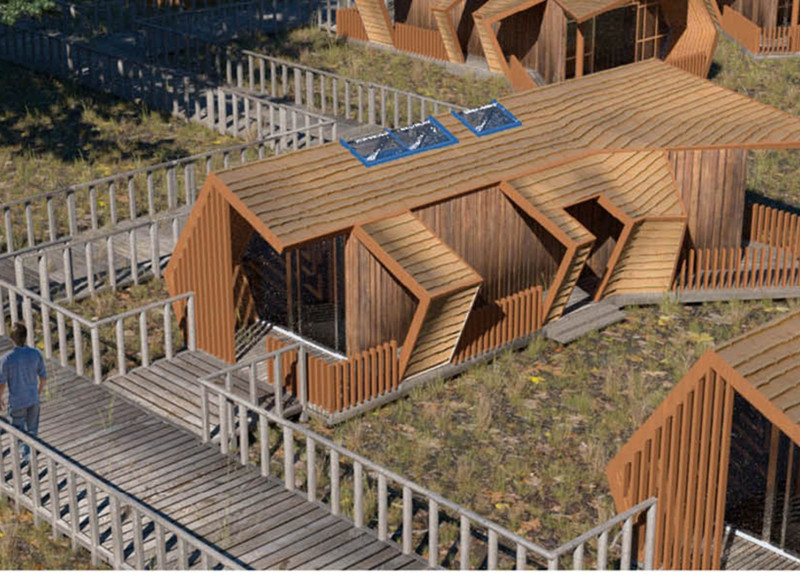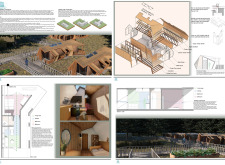5 key facts about this project
The project addresses the significant issue of woodland loss in Britain, where forest coverage has plummeted from 15% in the Middle Ages to just 4.7% today. Set against this backdrop, it proposes self-sufficient communities that blend human living with ecological restoration. The design aims to revitalize both the woodlands and wildlife habitats affected by urban development and agricultural practices.
Housing Design
Timber houses will be manufactured off-site, providing a sustainable approach to construction. This method minimizes disruption to the existing landscape and speeds up the building process. The homes are designed for efficiency and environmental friendliness, offering functional living spaces that fit into the natural surroundings.
Community Spaces
Community spaces are strategically placed among the residences, serving important functions for both farming and energy generation. These areas may include vegetable beds and photovoltaic panels, emphasizing self-sufficiency. This integration fosters a direct connection between people and their environment, promoting a lifestyle that respects nature.
Wildlife Conservation
Wildlife habitats are a key aspect of the design. These areas will be kept largely untouched, allowing for natural growth and the preservation of local biodiversity. By supporting organic ecological recovery, the design acknowledges the need to maintain habitats for various species that are threatened by urbanization.
Circulation and Connectivity
Raised pathways connect different parts of the community, enhancing movement for both residents and wildlife. This modular design allows for flexible site arrangements that can adapt to the landscape while promoting ecological interactions through elevated walkways. The circulation plan ensures easy access to common areas and considers the environmental needs of the surrounding landscape.
Balconies extend from the residences on three sides, providing outdoor spaces that encourage interaction with nature. This careful attention to these transitional areas fosters a strong connection between indoor and outdoor living. Residents can engage with their environment more fully, enhancing their overall experience of the community.



















































